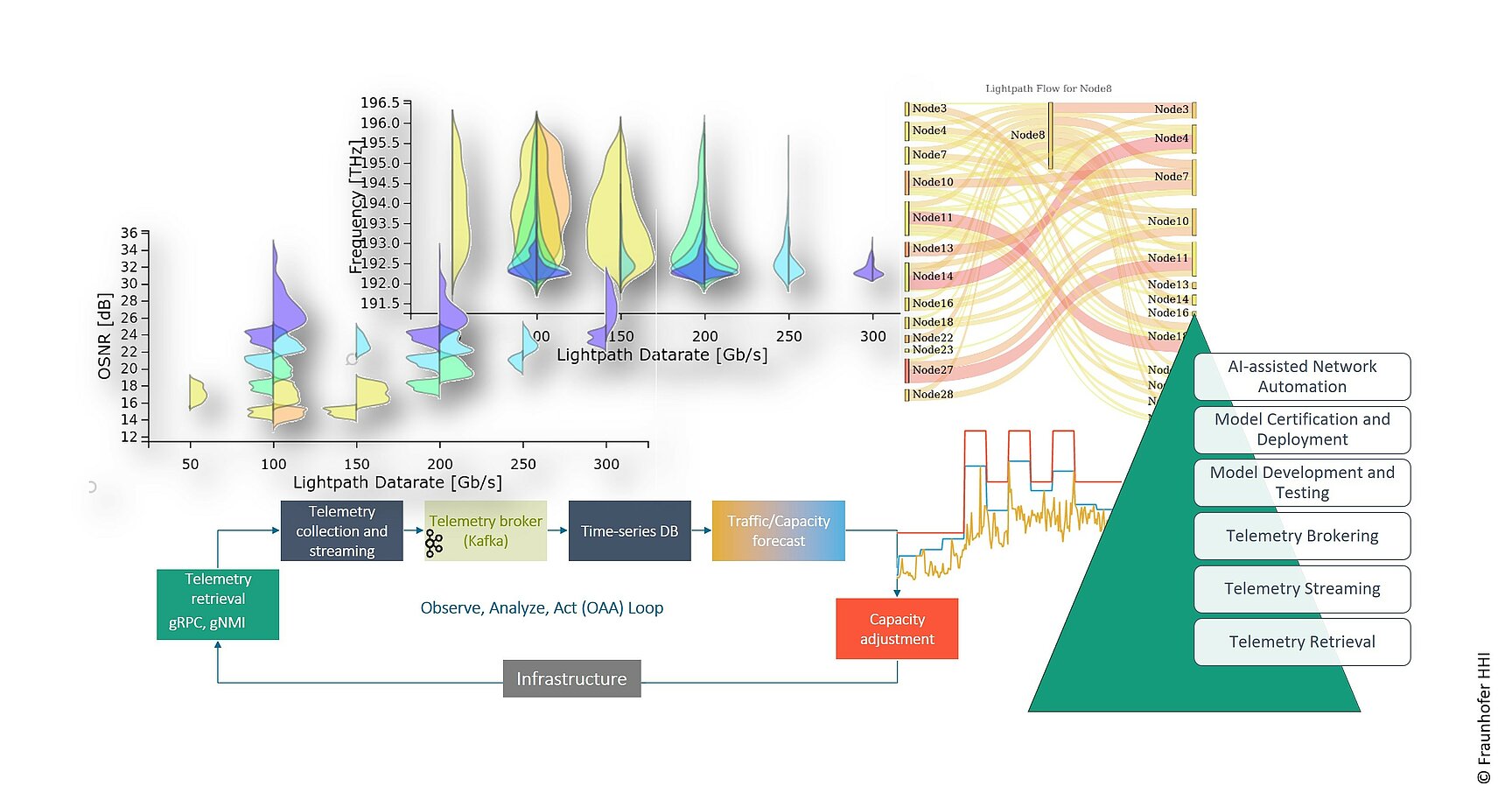Artificial Intelligence (AI) and its main sub-field, Machine Learning (ML), are transforming almost all industries and is considered as one of the main technological enablers for B5G/6G networks. They are also expected to change the status-quo and revolutionize the functional blocks across the entire stack of optical transport networks, which span from our rooms and offices (Fiber to the Room (FTTR)) to other cities/countries/continents (metro/core/submarine networks). At HHI, we develop AI-assisted solutions for the broad ecosystem of optical networks and innovate state of the art algorithms to bring the vision of AI-assisted Network Automation to reality.
Facts
The realization of AI-assisted network automation requires substantial research and developments in several key areas including: 1) network monitoring, 2) telemetry collection and streaming, 3) reference dataset generation, 4) algorithm development, 5) experimental test and validation, as well as 6) explainability, certification and deployment. These developments should consider the foundational characteristic of telco ecosystem, which is the presence of numerous stakeholders. On the one hand, this requires the incorporation of a high level of interoperability in the development process. On the other hand, as AI-assisted network automation relies heavily on data sharing, this adds an excessive level of complexity due to the confidentiality and regulatory issues. These concerns motivate the incorporation of solutions that offer security, trust, and protecting the privacy of stakeholders.
The group Data Analytics and Digital Signal Processing (DSP) carries out research in all these key areas and beyond. We develop innovative solutions across the entire ML pipeline and validate them using our large-scale test infrastructure. As a primary enabler for network automation, we develop and publish reference datasets for multitude of use-cases (e.g. QoT estimation, predictive maintenance, traffic forecast). Moreover, we work towards the paradigm of data ownership aware network automation and develop solutions to share and trade network data and ML models among different players (e.g. operators, vendors, third parties).
As one of our strategic areas, we perform research on the applications of privacy-preserving AI, AI on the edge, and federated learning for telecom networks and other data-centric industries. In this regard, we are actively incorporating new features and capabilities to our Privacy-Preserving AI-as-a-Service software solution, DLFi, to contribute to the paradigm of distributed intelligence in every ecosystem where a cyber-physical system is present.
